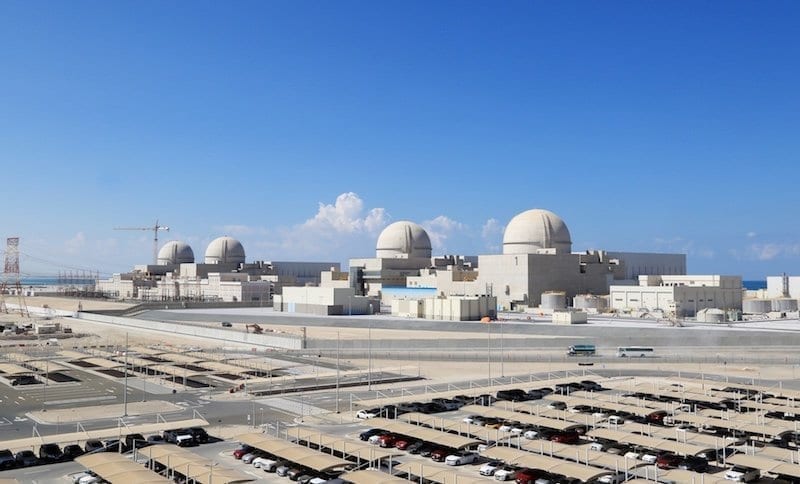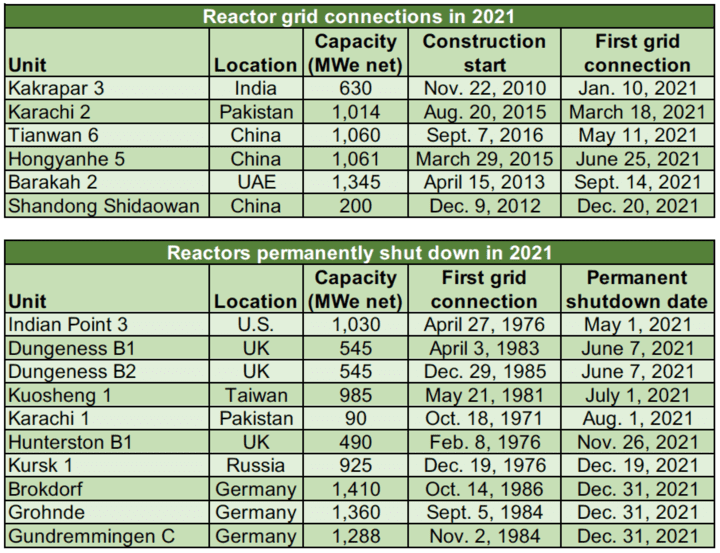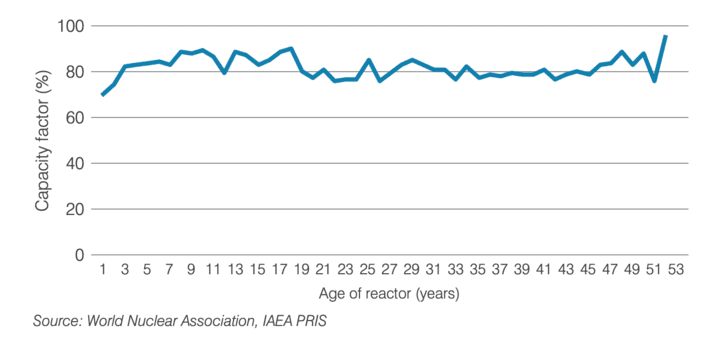Nuclear Power Plants Report Stellar Performance, but Retirements Could Limit Climate Benefits
Credit to Author: Aaron Larson| Date: Wed, 27 Jul 2022 21:51:38 +0000

The world’s nuclear power plants generated a total of 2,653 TWh of energy in 2021, up 100 TWh from 2020. It was the third-highest total ever for global generation from nuclear, just 4 TWh short of the output in 2019 and 7 TWh less than the record set in 2006.
The results were reported by the World Nuclear Association (WNA) in its annual “World Nuclear Performance Report,” which was released on July 26. “In 2021, the world’s nuclear reactors bounced back from the economic downturn resulting from the COVID-19 global pandemic,” WNA Director General Sama Bilbao y León said in a video to roll out the report. “Every additional megawatt-hour of nuclear generation helps in the fight against climate change,” she added.
Yet, as nuclear power generation increased around the world, the number of reactors operating and the total capacity in service decreased. In 2021, 10 reactors were shuttered, including three units in Germany where nuclear power is being completely phased out, while only six new units were connected to the grid (Table 1).

“Every reactor helps provide secure and reliable electricity, an issue that has been heightened by the war in Ukraine. In addition to the direct consequences of the war, the broader impacts on global energy supply have been profound and the fragility of the fossil fuel supply chain has been made plain. Fossil gas prices have skyrocketed, and with them, of course, so have electricity prices,” said Bilbao y León.
“Many of the closures of nuclear reactors over the last five years have resulted not from technical requirements, but from political decisions or economic pressures. Clearly, at a time when every kilowatt-hour of clean, secure energy is precious, and extending the operating lives of existing nuclear plants should be incentivized, misguided political dogma is making things worse,” she said.
As an example, Bilbao y León pointed to the situation in Germany. “Germany’s three remaining reactors performed very well—with high capacity factors frequently in excess of 90%—and together avoid emissions of 25 million tons of carbon dioxide every year. Being barely more than 30 years old, these reactors could supply clean and reliable electricity well into the second half of the century, but instead, they will be permanently shut down at the end of 2022,” she said.
One positive development for nuclear advocates noted in the report was that construction commenced on 10 new units in 2021—six in China, two in India, and one each in Russia and Turkey. That put the total number of reactors under construction around the world at 53. Furthermore,
“In the last few months, we have had announcements from many new and existing nuclear countries, including Argentina, Bangladesh, Bulgaria, Canada, Czech Republic, France, Egypt, Netherlands, Poland, Romania, Ukraine, and United Kingdom, all of them setting out their plans for new reactors large and small,” she said. “It is essential that these plans are delivered on in full, and expanded upon, so the pace and scale of new nuclear construction accelerates worldwide.”
Yet, even as new units are brought online, extending the operation of the world’s existing nuclear fleet is considered by many experts to be vital in achieving carbon reduction goals. WNA Senior Communication Manager Jonathan Cobb said, “Extending the operation of nuclear power plants is one of the lowest-cost forms of additional low-carbon generation. Operating the existing fleet of nuclear reactors for longer could make a major contribution to reducing greenhouse gas emissions in the short term, thereby tackling climate change.”
Therefore, he said, it’s important to understand how reactors perform as they age. Referencing a chart (Figure 1) from the report showing mean capacity factor by age of reactor, Cobb said, “The chart shows that there is no age-related decline in nuclear reactor performance. The mean capacity factor for reactors over the last five years of different ages shows no overall variation with age. Improvements in average global capacity factors have been achieved in reactors of all ages, not just new reactors of more advanced designs. Demonstrating high capacity factors for reactors of all ages strengthens the case for extending the operations of the current nuclear fleet.”

The global average capacity factor for the world’s nuclear fleet was 82.4% in 2021. That continued a trend of high global capacity factors seen since 2000. “There has been a steady improvement in reactor performance over the last 50 years,” Cobb said, noting that in the 1970s, only about 22% of reactors reported capacity factors of greater than 80%. “By 2021, that had more than tripled to around 68% of reactors achieving that goal,” he said.
—Aaron Larson is POWER’s executive editor (@AaronL_Power, @POWERmagazine).
The post Nuclear Power Plants Report Stellar Performance, but Retirements Could Limit Climate Benefits appeared first on POWER Magazine.